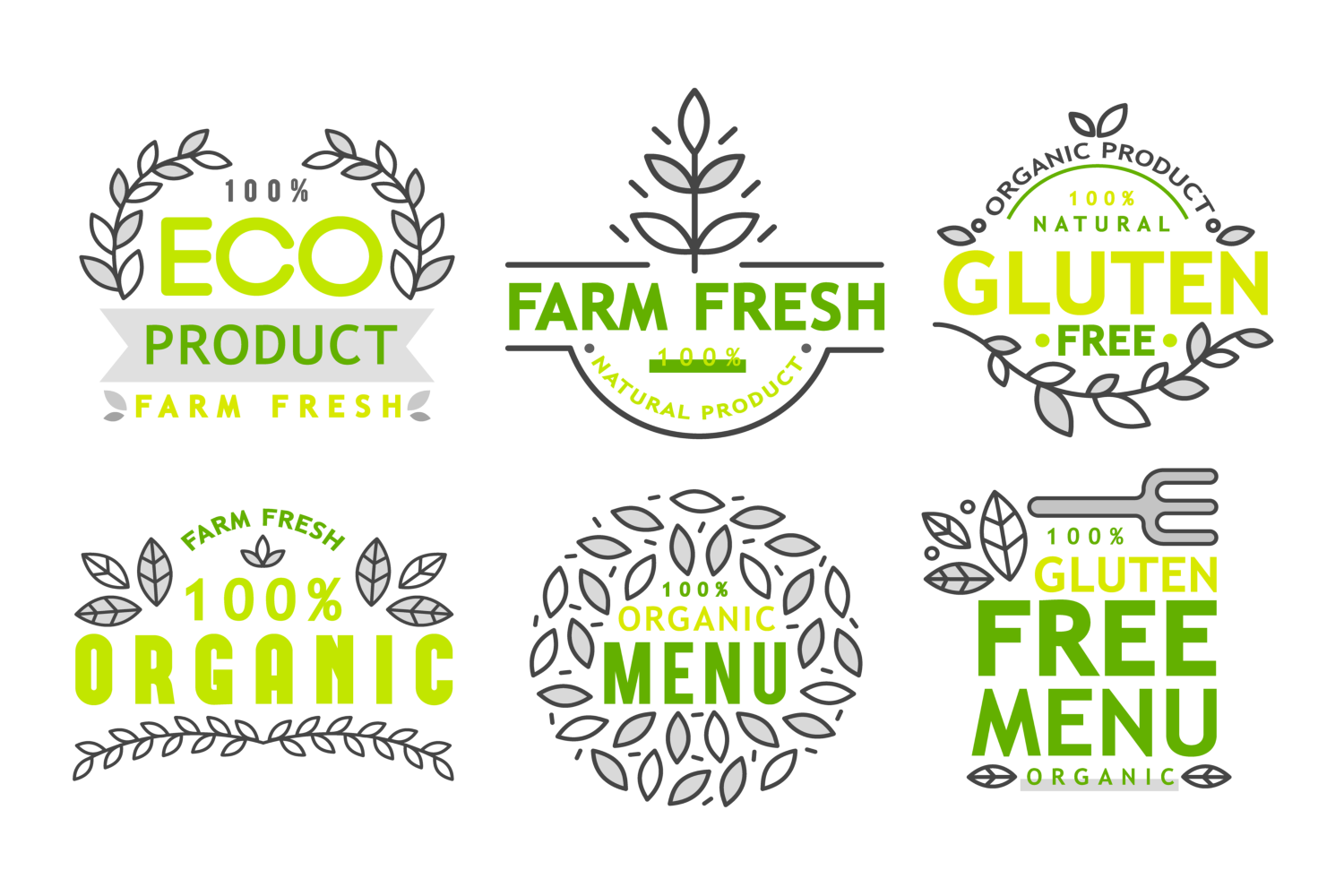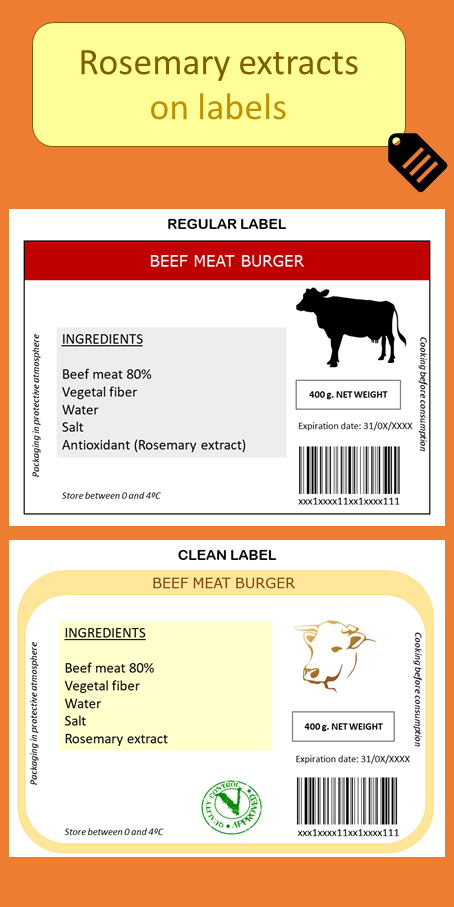
How to name natural extracts in different food labels.
Regular labels, ecological labels, clean labels… each one has a different treatment and it depends on the type of ingredient. In this article, we point to the exact term to quote plant extracts.
The constant growth of the food industry and the new trends and demands of consumers have led to the rise of new products and food additives, which, in order to ensure their safety, entails the need to adapt the regulations relating to labeling of the list of ingredients (which should not be confused with the one that advertise the products).
Not all substances can be declared as additives. Read more about it here. And the same goes for organic ingredients and products. For more information, consult Real Decreto 142/2002 and Regulation (EC) No 1333/2008 of the European Parliament and of the Council on food additives.
On the other hand, current consumers demand more comprehensible information on labels to know what ingredients and concrete additives the product contains and what function they perform in the organism. This is the reason of the arise of the so-called clean labels, which do not use the numerical classification of the European legislation to organise additives.
Contenido del artículo
What is the difference between ingredient and additive?
The first one is consumed as a food itself although it is mixed with others, while the second one is a substance that is added to food with a technological purpose (to improve its appearance, texture, resistance to microorganisms, etc.) in its manufacture, transport or storage. For example, a yogurt with pieces of strawberries is made up of milk and fruit. While, in a strawberry-flavored yogurt, the former does not appear physically. The strawberry flavor is provided by an additive.
Additives may be natural (vegetable, animal or mineral) or synthetic. And the term only can be mentioned if the substance appears in the EU list of additives.
Function of the extracts in food.
Before we get started, let’s remember that plant extracts are those substances extracted from plants to incorporate them into cosmetic, nutraceutical or food formulas for their ability to:
- To extend the shelf life of the final product, either by avoiding or stopping the oxidation of the food or protecting it from microbial attacks. This is the case of rosemary extracts.
- To carrey the healthy properties of the plant to the human or animal organism.
This is because the components extracted from the plant continue to be active in the body where they are incorporated. For example, applying a molecule with a high antioxidant function in a food will help to delay the degradation of fats, causing the loss of flavor, aroma or color of the product.
And depending on its nature and the dose applied, this substance may also be able to combat certain degenerative processes in the body due to premature or natural aging of cells and neurons.
Read more about the functions of extracts and how they are obtained.
Recommended extracts in foods.
The extraordinary properties of some molecules are very convenient in the food field.
One of them is Hydroxytyrosol, present exclusively in the olive tree. Scientific studies reveal its high performance as an antioxidant, anti-inflammatory and antimicrobial agent, being especially indicated in the prevention of cardiovascular diseases.
In fact, it is the only natural antioxidant (which does not come from a vitamin or mineral) recognized by the European Food Safety Agency (EFSA). Moreover, a final product that guarantees a daily contribution to the body of 5 mg of Hydroxytyrosol can legally advertise its cardioprotective effect.
However, not all products derived from the olive tree exceed this requirement. Not just the majority of conventional olive oils, as we explained in this article.
One way to achieve this effect would be through food supplementation, that is, incorporating Hydroxytyrosol to a product that contains little or none of this class of polyphenol. From oils to dairy products, including packaged juices and prepared broths and soups.
And the same happens if it is used to delay the degradation of fats caused by the oxidative action of free radicals, which arise due to endogenous causes (the passage of time) or exogenous one (for example, the increase in the temperature of the oil in a frying). In this case it can be applied in all those matrices that contain a high proportion of fats such as butter, margarine, mayonnaise, sauces and sausages.
Extracts in conventional labels.
When it comes to including a plant extract in a conventional label, the first thing we have to do is to check if this extract is recognized in the list of additives of the EU. (See the Commission Regulation (EU) Nº 1129/2011 of 11 November 2011).
Option A. Yes, it is an additive.
In the case of using it as an antioxidant, we have two possibilities: use the numeric code that the EU provides or express the category of to which it corresponds and, next and in parentheses, the name of it. For instance, rosemary extract standarized as a total of carnosic and carnosol acids is recognized as an additive, therefore we could name it:
» E-392 (antioxidants are collected in the 300 series, rosemary occupying 92).
or
» Antioxidant (Rosemary Extract).
Read more about the labeling of rosemary extracts.
Option B. No, it is not an additive.
Here we can not use the term ‘additive’ nor ‘antioxidant’ – although it also performs that function – since it is not recognized in the list. Therefore, we would have to employ other formulas. For Hydroxytyrosol extracts, which is not recognized as an additive, it could be: Olive Extract, Olive Fruit Extract, Olive Scent, etc. For Rosemary Extracts standarized in Rosmarinic acid (which is not included either) would be: Rosemary Extract, Rosemary Spice or Rosemary Scent.
Extracts on clean labels.
Clean labels is an unregulated concept that is used to refer to the labeling of those products that do not include synthetic additives or use numerical classifications when labeling natural additives.
If the extract is recognized in the EU list as an additive, we can express its function with the long formula or a general term.
In the case of rosemary rich in carnosic and carnosol, it would be Antioxidant (Rosemary Extract) or Rosemary Extract, Rosemary Spice, etc.
For Hydroxytyrosol Extract, we would follow the same rules as in a conventional label: Olive Extract, Olive Fruit Extract, Olive Scent, etc.
Example of a conventional label and a clean one:

Examples of labels. Recreation.
Extracts on the labels of organic food.
Before proceeding we have to differentiate between eco-labels and labels for organic food.
The first ones belong to a voluntary qualification system that certifies the low impact of the product on the environment.
The second ones are clean or conventional labels in which all the ingredients come from organic farming, do not include synthetic additives or genetically modified ingredients. They also need to be certified by a control authority.
Therefore, if we want ours extract to be part of the list of this type of products, they must comply with the same requirements: coming from organic farming, without any synthetic carriers and to be certified.
Contact Nutexa to learn more about our plant extracts.
Access the catalog of Nutexa extracts through this link.
BIBLIOGRAPHY
- Real Decreto 142/2002, de 1 de febrero, por el que se aprueba la lista positiva de aditivos distintos de colorantes y edulcorantes para su uso en la elaboración de productos alimenticios, así como sus condiciones de utilización.
- Reglamento (CE) Nº 1333/2008 del Parlamento Europeo y del Consejo, de 16 de diciembre de 2008, sobre aditivos alimentarios.
- Reglamento (UE) Nº 1129/2011 de la Comisión, de 11 de noviembre de 2011, por el que se modifica el anexo II del Reglamento (CE) Nº 1333/2008 del Parlamento Europeo y del Consejo para establecer una lista de aditivos alimentarios de la Unión Texto pertinente a efectos del EEE.
- http://www.aecosan.msssi.gob.es/AECOSAN/web/seguridad_alimentaria/subdetalle/aditivos_alimentarios.htm
- https://www.ecoagricultor.com/etiquetado-de-los-alimentos-ecologicos/
- https://www.iso.org/home




